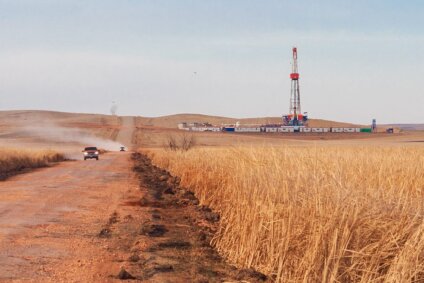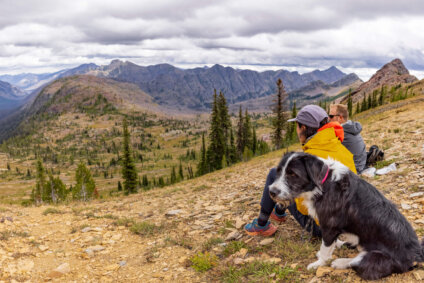MWA Asks for Changes in the Current Crazies Land Exchange Proposal
They include guarantees of protection for lands that would be swapped from public into private ownership
In 1960, MWA’s founders, Ken and Florence Baldwin, led the organization’s first Wilderness Walk in the Crazy Mountains. Since then, MWA has worked to protect the Crazy Mountains, often in partnership with Crow Tribal members and officials. Originally Apsáalooke (Crow) territory, the jagged island range has held immense spiritual significance to the tribe for centuries.
Together, the tribe and MWA were able to convince the Forest Service this year to recommend more than 10,000 acres for Wilderness designation and protect 28,000 acres as a backcountry area in its final draft of the Custer Gallatin Forest plan, a huge victory for a place that has never been well protected.
One of the biggest reasons for that lack of protection is the checkerboard private and public land ownership pattern that exists in the Crazies, a legacy of the 1864 Northern Pacific Railroad Act. The checkerboarding throughout the core of the range makes conservation and consistent management difficult. Although many of the private inholdings remain wild and undeveloped, there is no guarantee they will stay that way.
In recent years there have been disputes over public access that cross private lands. An access point in Sweetgrass Canyon is currently the subject of litigation by several hunting and angling groups. There have been multiple efforts to resolve the conflict through negotiation and avoid a lengthy lawsuit that could cost significant taxpayer dollars and produce uncertain results. There has been progress on the west side of the range with a trail re-route. There’s also bee some progress with a land swap proposed by the Forest Service to address access and consolidation on the south end of the range.
A new effort aims to consolidate lands in Sweetgrass Canyon and other areas on the east side of the Crazies. The proposal was developed by the Crazy Mountains Working Group, composed of farmers, ranchers, the Park County Environmental Council, the Rocky Mountain Elk Foundation, Montana Wildlife Federation, and the Forest Service, among others.
MWA has long supported public land consolidation in order to protect the outstanding natural and cultural values in the Crazy Mountains. However, we need to see some additional measures to strengthen the conservation value of this proposal before we can support it.
The East Crazies land exchange would transfer 5,763 acres of private lands into public ownership, and trade away 4,114 acres, for a net gain of 1,649 acres of public land. This includes lands in the Madison Range and in the Crazy Mountains. Driving this exchange is Yellowstone Club’s desire to acquire 558 acres of public land in order to expand its ski area. In addition to the lands swaps, the proposal includes a new 21-mile trail connecting Big Timber Canyon Trailhead and upper Sweetgrass Creek, funded by the Yellowstone Club.

Sweetgrass Creek, which would be exchanged into private ownership under current proposal (photo by Emily Cleveland)
The Crow Tribe is supportive of the proposed exchange, primarily because it will, as part of the proposal, gain an easement to access the privately-owned Crazy Peak.
MWA would, however, need to see several elements in the final proposal before we can support the exchange, including:
- Conservation easements on all public lands that are exchanged, similar to what was proposed in the South Crazy Mountains Exchange. Conservation easements would help ensure that large sections of newly consolidated private lands would not be significantly developed. This would also help ensure that the current wild character of the Crazy Mountains remains. This is especially important in Sweetgrass Canyon, where the exchange would make the entire drainage private.
- A provision that gives the public or a land trust a first right-of-refusal should any of those lands come up for sale. This should also apply to the significant amount of inholdings in the core of the range that are not addressed in this proposal but are owned by several landowners who are involved in this exchange. A first right of refusal would provide another opportunity to consolidate land ownership in the range.
- Assurance that this proposal will not affect the ongoing lawsuit over access to Sweetgrass Creek. The proposed exchange and the construction of the new 21- mile trail to Sweetgrass Creek should not affect precedent or relinquish the public interest in any current access dispute.
Consolidating land in the Crazies is a necessity if we ever want to legislatively protect these mountains in the future. So we’re pleased that this proposed exchange takes a step towards achieving that goal. But we still have a ways to go to make this exchange as it should be in order to protect what makes the Crazies so special.

Emily Cleveland
Senior field director
Emily works on developing collaborative land management efforts and building grassroots support and partnerships in the Gallatin and Madison Ranges, the Snowcrest Mountains, the Ruby Valley, the Crazies, and the Beaverheads.
Email Emily
Stay Connected
"(Required)" indicates required fields


